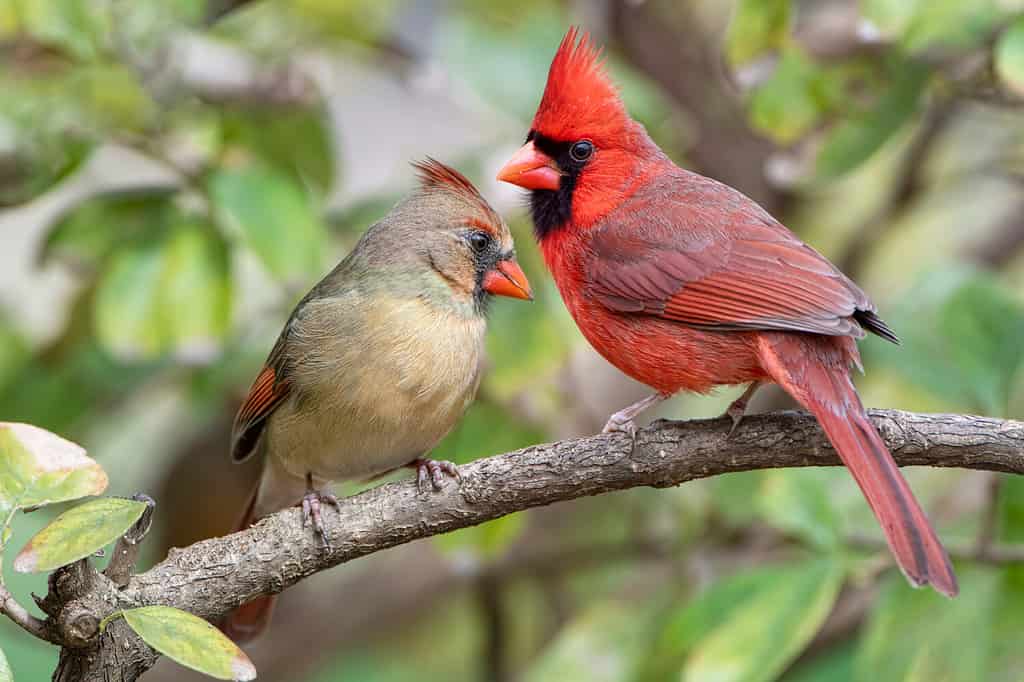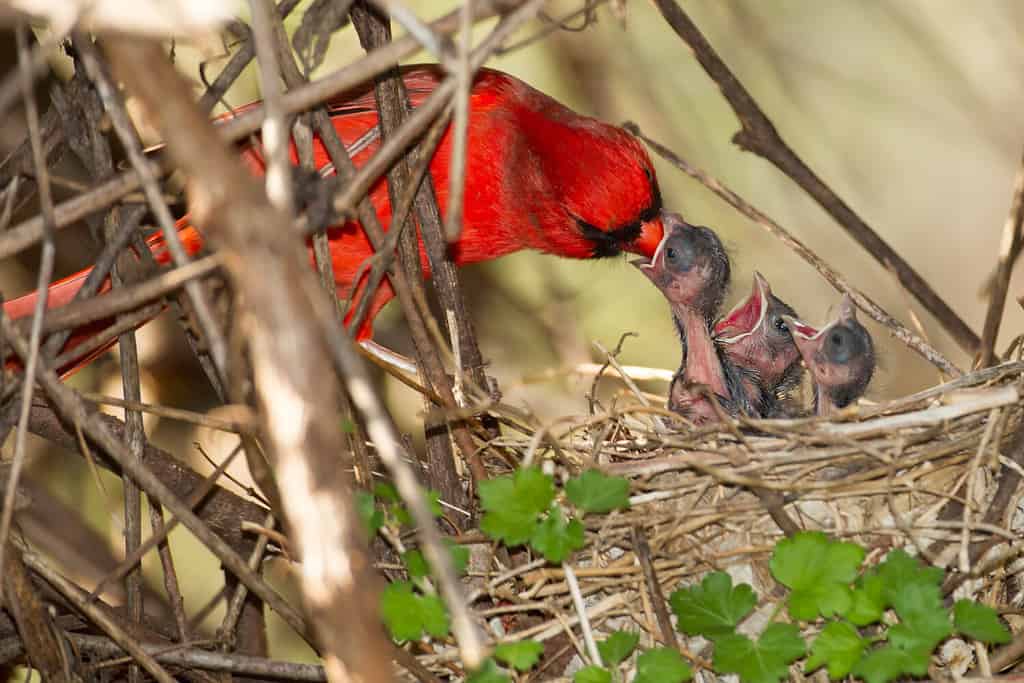Have you ever sat outside and noticed a pair of cardinals sharing food? You may have seen two cardinals pressing their beaks together and not realized this was what they were doing. Regardless, watching cardinals share food can be an amazing experience, whether you’re a professional or amateur bird-watcher. But why do cardinals share food?
Below, learn exactly why cardinals share food, as well as who they most often share their food with. Plus, learn more about the northern cardinal species as a whole. Ready to learn more? Let’s dive in!
The Reason Why Cardinals Share Food
When cardinals share food, it is an action known as mate-feeding. This is a significant aspect of courtship, and it is one of the ways that a male will demonstrate affection to his mate. The main method in which mate-feeding occurs is known as beak-to-beak. When you see this, it may seem like the two birds are kissing. However, the male is instead passing seeds to her. This occurs not only prior to the incubating process but throughout as the female is unable to leave the nest and secure food for herself.
The female will request food from her mate in a way that is reminiscent of their offspring. That is, she will open her beak and flutter her wings. There are two ways that a male may feed the female: by providing her with solids, such as entire seeds, or by regurgitating food in the same way that they do for their young.
Mate-feeding occurs as a way for cardinals to develop a bond. It also allows for the female to test the male’s ability to provide, a necessary skill will raising a brood of helpless chicks.

Male cardinals feed their mates as a part of courtship.
©Bonnie Taylor Barry/Shutterstock.com
Additional Aspects of Cardinal Courtship
Cardinals are a monogamous species. Their pairings can last only a season, or they can last a lifetime. Mate-feeding is only one aspect of cardinal courtship, however. Whereas other bird species see only the males singing their songs as a way to enforce the territory, both the male and female birds in this pairing will sing. Their duets cover a wide variety of communication needs, from announcing the presence of nearby predators to establishing a territory.
Ornamentation may also play a role in the courtship of cardinals. This species is sexually dimorphic, with males and females sporting vastly different plumages. Females will often judge potential mates not only by their crowns but also by their masks. It is important that these features look good, such as maintaining a sharp and colorful appearance, as this demonstrates health. A healthy cardinal can pass along healthy genes, helping the potential brood to survive long enough to continue the family tree.
Do All Cardinals Share Food?
Because cardinals share food as a part of mate-feeding, a part of courtship and mating, not all cardinals share food. Males will only share food with their mates. However, this only extends to adults. The male and female cardinals will both share food with their young as well, with the male contributing a more significant sum of food than the female.
This process is different from sharing food, however, as it is an essential part of avian care that most birds demonstrate.
However, what is most interesting is that male cardinals may occasionally feed the offspring of other species. This is not a dominant or otherwise aggressive behavior, though. Rather, it occurs because the chicks that reside nearby beg through a series of chirps, calling for their parents. For a busy cardinal father, this can get confusing, resulting in him providing a bit of unsuspected help in offering a meal.

Along with feeding their mates and offspring, male cardinals will occasionally feed the young of other species.
©Agnieszka Bacal/Shutterstock.com
Species Profile: Northern Cardinals
Now that you know a bit more about the courtship and food-sharing habits of the northern cardinal, you may wish to learn more about the species overall.
The northern cardinal (Cardinalis cardinalis) is also known as the red cardinal or common cardinal. They are found throughout North America, although they are most common on the eastern coast of the United States. In their native regions, the cardinal is a year-round resident, neglecting to migrate even in the northern states where winters can be chilly. Because of this, along with the male’s year-round bright red plumage, they can be a breathtaking sight to see, especially against a snowy backdrop. They thrive in a variety of different habitats, ranging from rural forests to suburban areas.
Many states hold the cardinal as their state bird. Because of their close pairings and surprisingly human-like behaviors, such as “kissing,” they often symbolize love and loyalty.

The northern cardinal is a beloved species due to both its striking plumage and its mating behaviors.
©peter weiler/Shutterstock.com
The photo featured at the top of this post is © Bonnie Taylor Barry/Shutterstock.com
Thank you for reading! Have some feedback for us? Contact the AZ Animals editorial team.






